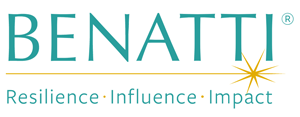I am very excited to feature an article written by past coaching client Gary Ainsworth who is featured in the Innovation chapter of “Career ReCharge: Five Strategies to Boost Resilience and Beat Burnout.” Gary continues to innovate as a career management executive coach and models resilience, as you will appreciate when you read his story in “Career ReCharge.”

When do you Promote your strengths and when do you Protect them? Not every strength will get you the job or promotion you want. If you’re an executive, fit is sometimes as important or more important than your experience, talents, and strengths.
As a career management and executive coach, I work with my clients to understand their preferences, satisfiers, desires, and strengths. We work hard to develop a consistent brand and how to best represent it, particularly through the lens of their strengths because how strengths are presented is important in shaping and projecting your brand.
As I mentioned earlier, fit is critical and probably the most important aspect of whether a candidate gets an offer or not. Companies are very much like people. They hire like-minded people that they believe match their community’s values. Often job descriptions are written in a way to give clues on whether the environment is dynamic or predictable; structured or freewheeling; intense or relaxed; and open or hierarchical. By networking and research, you can determine the nature of a company and whether you might be a good fit.
But what if because of desire, circumstance, or some other reason, you believe that you mostly fit in a target company, but there are aspects of your brand they might not value (yet). This is a particular problem for older, more experienced workers who have high energy; are experts in their field and have embraced continual improvement; and have a full spectrum of training and talent to offer. The problem is their energy and knowledge can frighten off less-experienced managers, or those who haven’t yet realized their growth is limited not by their talent, but by the excellence of the team they hire.
The Gallup CliftonStrengths (formerly StrengthsFinder) is a very refined tool for understanding your strengths in terms of two important perspectives which they refer to as Balcony and Basement. Every strength has a balcony and basement, or in simpler terms, a strength can be an asset in some situations and a liability in others. For example, if one of your strengths is assertiveness and being driven, it can drive and deliver difficult projects while at the same time it can burn out your inexperienced team who hasn’t yet achieved balanced work habits.
Let’s take another example, one of being great at technical problem solving. It is great to have such a strength in reserve. But if it’s discussed extensively during an interview for a Vice President of IT or CIO position, the hiring company might perceive you as enjoying dwelling in the technical weeds instead of leading a team and developing new strategies for a growing business.
So how does this relate to branding? A brand is what you project and what people perceive. Part of a career marketing plan is the timing of how you shape your brand with the hiring company and then offer them supporting evidence. That might mean carefully reading the job description, listening to the recruiter or hiring representative during the initial interactions, and determining what should be initially promoted and what should be protected.
Understand, this is not about being dishonest or misleading. During the hiring process, the hiring team has a limited scope. They are relying on a job description (and assuming the person who wrote the job description wrote it accurately based on the company’s needs), the candidates’ resumes, their assessment, and their peers’ interview notes and perceptions. Consider this when presenting your strengths, capabilities, achievements, and brand, and think carefully of what should be promoted to get you the job and what should be protected, or held in reserve, because it might just cloud the hiring team’s perception of you.
Keep your branding and story simple and to the point. Promote your strengths that support fit, while you carefully Protect those strengths, preferences, and desires that might not help you get the job you want.

